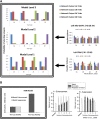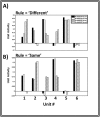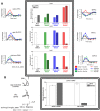Frontal cortex function as derived from hierarchical predictive coding
- PMID: 29497060
- PMCID: PMC5832795
- DOI: 10.1038/s41598-018-21407-9
Frontal cortex function as derived from hierarchical predictive coding
Abstract
The frontal lobes are essential for human volition and goal-directed behavior, yet their function remains unclear. While various models have highlighted working memory, reinforcement learning, and cognitive control as key functions, a single framework for interpreting the range of effects observed in prefrontal cortex has yet to emerge. Here we show that a simple computational motif based on predictive coding can be stacked hierarchically to learn and perform arbitrarily complex goal-directed behavior. The resulting Hierarchical Error Representation (HER) model simulates a wide array of findings from fMRI, ERP, single-units, and neuropsychological studies of both lateral and medial prefrontal cortex. By reconceptualizing lateral prefrontal activity as anticipating prediction errors, the HER model provides a novel unifying account of prefrontal cortex function with broad implications for understanding the frontal cortex across multiple levels of description, from the level of single neurons to behavior.
Conflict of interest statement
The authors declare no competing interests.
Figures






References
-
- Luria, A. R. Higher Cortical Functions in Man. (Springer Science & Business Media, 2012).
-
- Stuss, D. & Benson, D. F. The Frontal Lobes. (Raven Press, 1986).
Publication types
MeSH terms
LinkOut - more resources
Full Text Sources
Other Literature Sources

